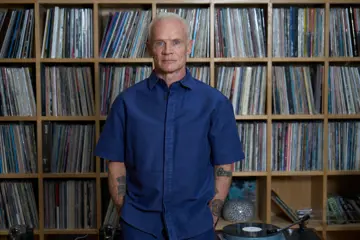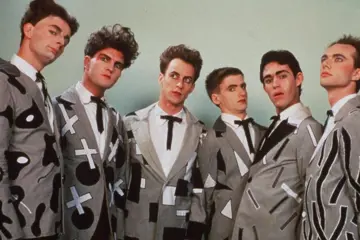EmoLex, an emotion lexicon that tracks eight basic human emotions, such as anger, fear, anticipation, trust, surprise, sadness, joy, and disgust, was channelled by Crossword Solver to track down the happiest and saddest songs on Spotify.
EmoLex also finds positive and negative associations throughout English words, which makes it the perfect tool to reveal the happiest and saddest popular artists on the streaming platform.
The 2017 Maroon 5 hit, What Lovers Do, was, at one point, the most positive song on Spotify, with a 72.3% rating. However, the statistics also show Olivia Rodrigo as a relatively happy-sounding artist, with 24.6% of her lyrics dubbed as being positive. Have the people behind EmoLex actually listened to Sour?
On the other hand, Jason Derulo (18.8%), Hailee Steinfeld (19.2%) and GIVĒON (19.2%) were labelled some of the less happy artists, which is surprising when Derulo’s frequent name call either elicits joy, a laugh, or annoyance.
18.1% of Billie Eilish’s lyrics have been found to be sad, with Machine Gun Kelly at 14.9% and The Weeknd at 12.4%.
Don't miss a beat with our FREE daily newsletter
The Happiest Songs in the Charts, based on lyrics sentiment alone, are What Lovers Do, Love Me Harder by Ariana Grande and The Weeknd, Love Myself by Hailee Steinfeld, Me! by Taylor Swift (now, that’s a happy-sounding song), with Youth by Troye Sivan and more filling up the chart.
Meanwhile, the Saddest Songs in the Charts are Kendrick Lamar’s Humble, Supalonely by Benee, Sad! by XXXTentacion, Until I Found You by Stephen Sanchez, Falling by Harry Styles, followed by tracks like when the party’s over by Billie Eilish, Justin Bieber’s Sorry, Lost by Frank Ocean, and many more. Check out the graphics below via Crossword Solver.
Earlier this year, Dr Michael Bonshor from the University of Sheffield revealed the happiest song of all time. Can you guess what it is?
Dr Bonshor found that the most uplifting songs contain a tempo of 137 beats per minute (bpm) and an ordinary verse-chorus-verse-chorus structure. However, what makes human beings latch onto a song is an unpredictable element like a key change or a "seventh chord".
He continued, "Alongside this, cheery songs usually have a strong 1-2-1-2 beat to them, so that you can dance along – and a short introduction means the song kicks off with a bang straight away, and there’s not a long build-up.”
We have the answer to the Happiest Song Of All Time here.
 Crossword Solver
Crossword Solver
 Crossword Solver
Crossword Solver
















